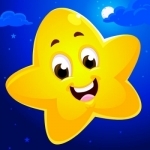
West Indies Boating Charts
Navigation and Travel
App
*** For people who are looking for appealing charts, features like seamless scrolling, comprehensive...

Jungle Animal Hair Salon - Wild Makeover
Games and Education
App
Cut, color, shampoo, style and dress up super cute jungle animals: sloth, leopard, toucan, elephant,...

Packing Pro
Travel and Productivity
App
** Featured in Apple's "10 Essentials," "Traveling Home" & "Staff Favorites" ** ** #1 Travel app in...

TeamSnap Sport Team Management
Sports and Productivity
App
TeamSnap is the No. 1 sports team, club and league management application. Focus on team development...

Afrikaans ABC Flashcards (with audio)
Education
App
* * * 50% off, limited time offer. Only 99c * * * Afrikaans ABC Flashcards (with audio) is a fun...

3rd Grade Non-Fiction Reading Comprehension
Education and Games
App
Improve your reading skills! 3rd Grade Non-Fiction Reading Comprehension is the most advanced...

KidloLand: Kids Nursery Rhymes
Education and Games
App
KidloLand is an award-winning app for kids (1-5 yrs) with 1000+ nursery rhymes, songs, games and...

Motion Math: Fractions!
Education and Games
App
Play the award-winning learning game that puts the action in fraction! * Excellence in Design Award...

Ultimate Shark Simulator
Games and Entertainment
App
Dive into the deep blue sea and rule over the ocean as a real Shark! For the first time ever, choose...
